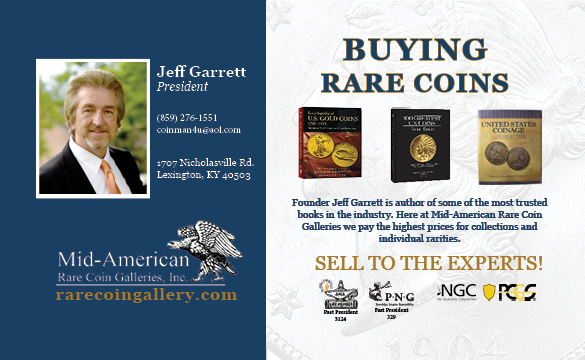
PREV ARTICLE
NEXT ARTICLE
FULL ISSUE
PREV FULL ISSUE
REVIEW: DU SIMITIèRE AND HIS MUSEUMJoel Orosz provided this review of a recently published paper by Gian Domenico Iachini of the State University of Milan on Pierre Eugene Du Simitière and the First American National Museum. Thanks! Many thanks also to Paul Bosco of New York for bringing this new study to our attention. The paper references Joel's great 1988 book The Eagle that is Forgotten: Pierre Eugène Du Simitière, Founding Father of American Numismatics. -Editor  Pierre Eugene Du Simitière, George Washington Before Boston, obverse and reverse, designs for medal, 1776, The Library Company of Philadelphia The paper itself is solidly researched and well-written. He did miss my work on Du Simitiere in my dissertation, Curators and Culture: The Museum Movement in America, 1740-1870, published by the University of Alabama in 1990, but I won't hold that against him, since I treated more than a dozen representative museums during that time span. A key word search would not turn up the fact that part of it was about Du Simitiere. Most of the Du Simitiere material Iachini covers, especially regarding numismatics, has been presented before, principally by Hans Huth, Paul Sifton, and me. Iachini does bring out some new (at least to me) material on Du Simitierie's work on state seals, which is useful. I was able to follow Du Simitiere's numismatic collection to his co-executor, Ebenezer Hazard, but John Lupia has taken if further, tracing it to another sale in Philadelphia in 1813--but after that, the trail turns cold.
On balance, though, Iachini's work is well-done, and since The Eagle That is Forgotten has been well-nigh forgotten during the 30 years since it was published, it certainly couldn't hurt to revisit this topic in The E-Sylum. Reading his work may well inspire new interests in or at least appreciation of, the early days of numismatic interest in what has become the United States. To read the complete paper, see:
Here's an excerpt summarizing Du Simitière and his impact. -Editor Having arrived in the New World as a young painter, illustrator, and translator, and having spent many years researching and collecting, DuSimitière decided to follow the old European custom of setting up a “Curio Cabinet” containing relics of many types, and gradually to expand his collection until it became “greatly celebrated in America, where it is unrivalled,” according to the Marquis de Chastellux who saw it in 1782 (Chastellux 111). Years before its opening to the general public, however, his studio was frequented by travelers and men of politics, such as Continental Congress member Richard Smith who reported in his diary in 1775 that he had amused himself “all the morning in Du Simitière’s museum” When Du Simitière officially opened his sundry collection of Americana to the public in 1782, the exhibition was essentially arranged in “natural” and “artificial” curiosities that spanned from specimens and sketches of natural history to modern and antique artifacts. He did not mention (or, if so, probably summarized) his known numismatic collection as well as his trove of printed materials concerning the history of the Colonies and the American Revolution as “a number of miscellaneous Curiosities of various kinds.” Though short-lived and its founder forgotten soon after his death and burial in an unmarked grave in St. Peter’s Church Yard in Philadelphia, Du Simitière’s American Museum predates by three years the one traditionally credited as the first of the republic, founded by the well-known painter Charles Willson Peale in the same city. A scholar, a voracious collector of books and “curiosities,” and the acquaintance of three future presidents of the United States and other major political and military leaders of the time, Du Simitière himself was a “very curious man,” as John Adams described him in an oft-quoted letter to his wife; the epithet “curious” is le mot juste for a man single-handedly able (and always with limited economic resources) to put together one of the best libraries on the continent and its first historical museum. Bibliophiles will appreciate Du Simitière's eye for collecting ephemera. -Editor In New York, during 1769 and 1770, he became a naturalized citizen and deepened his interest in the colonies’ growing controversy with London, beginning his custom of picking up from the street broadsides, pamphlets, handbills, and newspapers related to the politics of the day. The percentage of the now unique printed items that he gathered together is staggeringly high; these documents illuminate the revolutionary era as only informal productions of a period can. Thankfully, Du Simitière and his monumental contributions to the study of American history and numismatics are not quite forgotten, thanks to the writings of Orosz, Iachini and others. I encourage our readers to acquaint themselves with his life and work through these excellent, well-illustrated studies. -Editor  Wayne Homren, Editor The Numismatic Bibliomania Society is a non-profit organization promoting numismatic literature. See our web site at coinbooks.org. To submit items for publication in The E-Sylum, write to the Editor at this address: whomren@gmail.com To subscribe go to: https://my.binhost.com/lists/listinfo/esylum All Rights Reserved. NBS Home Page Contact the NBS webmaster 
|
